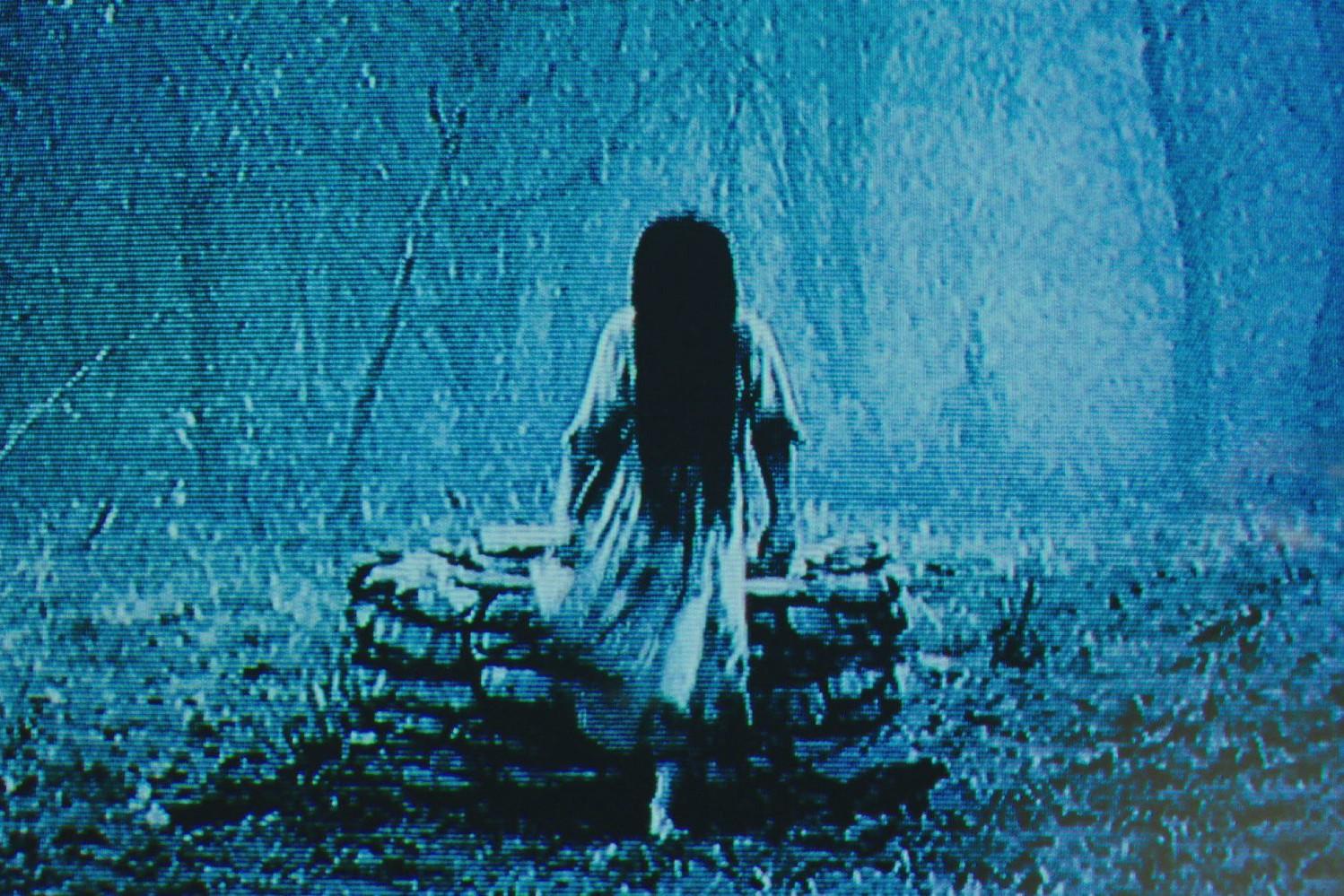
The keynote horror-movie image of the ’90s is probably the black-haired ghost girl wriggling out of the TV to get her vengeance at the end of Ringu — a show-stopping entrance heightened by director Hideo Nakata’s use of lo-fi illusionism. The uniquely unnerving effect was achieved by filming Kabuki theater actress Rie Ino’o walking backward in an exaggerated fashion and then reversing the footage — a move straight out of Tobe Hooper’s and Steven Spielberg’s Poltergeist playbook that also visually evoked older Japanese chillers like Kwaidan as well as David Cronenberg’s Videodrome (where James Woods was swallowed whole by a voracious television set).
A rare example of a perfectly prepared and executed payoff, Ringu’s climax transformed the film into a surprise instant classic.
When the scene was restaged four years later in the inevitable American remake, the addition of CGI to the equation actually detracted from the scariness while simultaneously vindicating the story’s technophobic subtext. At its core, Ringu is an allegory about an ancient supernatural evil being transmitted through a modern electronic medium, but in making the transition from East to West — and from analog choreography to fritzy digital pixels — the ghost in the machine lost a little bit of her soul.
These minor flaws aside, The Ring was still pretty much a model copy of an extraordinary foreign import, boasting a stellar lead performance by Naomi Watts (fresh off her triumph in Mulholland Drive), an appropriate amount of reverence for its source material, and a mesmerizing blue-steel color palette courtesy of director Gore Verbinski (whose upcoming thriller A Cure for Wellness looks similarly overcast). The decline in quality from the original to its Hollywood redux was surprisingly negligible, but the drop has grown steeper over the past 15 years. Nakata himself botched the assignment in the pointlessly convoluted follow-up The Ring Two, which nevertheless looks like a masterpiece compared to F. Javier Gutiérrez’s new Rings, a pseudo-spinoff that could politely be described as a missed opportunity.
To give credit where it’s due, there is one great idea in Rings, whose script has been attributed to three writers, including the legendarily erratic Akiva Goldsman, whose résumé includes an Academy Award and also all of Arnold Schwarzenegger’s one-liners in Batman & Robin. Following a distractingly silly prologue set on an airplane (which tries and fails to one-up World War Z’s nightmarish midair zombie outbreak), Rings zeroes in on a professor played by Johnny Galecki (not quite looking old enough for tenure) whose punishment for mansplaining the nostalgic glory of VHS to his girlfriend comes after he accidentally watches the haunted video tape. He realizes he needs to show it to someone else to avoid dying in seven days — at which point he recruits a group of grad students for an extra-credit project.
This is a potentially wicked setup for a collegiate horror comedy, and the moment when our new heroine Julia (Matilda Lutz) — who storms onto a Spokane campus looking for her AWOL boyfriend Holt (Alex Roe) only to discover a secret cabal of suck-ups screening and uploading digital copies of the cursed cassette to the web — is loaded with promise. Imagine a movie where a group of trust-fund brats wreak havoc on one another’s Facebook pages by posting lethal video files and you’ll have some idea of how much fun things could have been.
But Rings isn’t witty enough to satirize 21st-century social-networking practices (à la 2015’s underrated Unfriended) or even to kid its parent franchise like last year’s delirious J-horror parody Sadako vs. Kayako, which imagined a confrontation between the pale villainesses of the Ring and Grudge universes. Instead, it’s a fatally straight-faced sequel, plodding through its plot points without effort or enthusiasm (or, crucially, scares of any kind). A Milanese model inexplicably cast as the Northwestern girl next door, Lutz seems lost in a part that doesn’t ask her to do much besides look spooked while skulking around, and Roe doesn’t register as anything more than a well-meaning dork (although he’s admittedly pretty cute when he tries to use the myth of Orpheus as pillow talk).
The only (welcome) levity is provided by that old glazed ham Vincent D’Onofrio, who plays a hulking blind recluse who knows a surprising amount about the dreaded Samara (seen in flashbacks taken directly from The Ring). Righteously bearded and hiding behind dark sunglasses, he’s got energy to spare, and sells the hell out of his dialogue, which is mostly warnings to the two leads about how it’s sometimes best to leave alone that which is already dead and buried. As it turns out, it’s good advice that the makers of Rings unfortunately did not heed themselves.